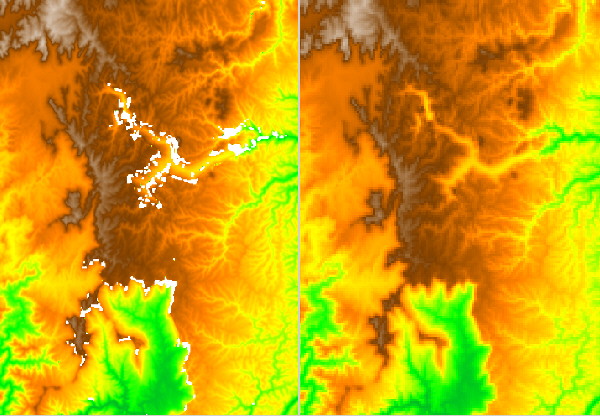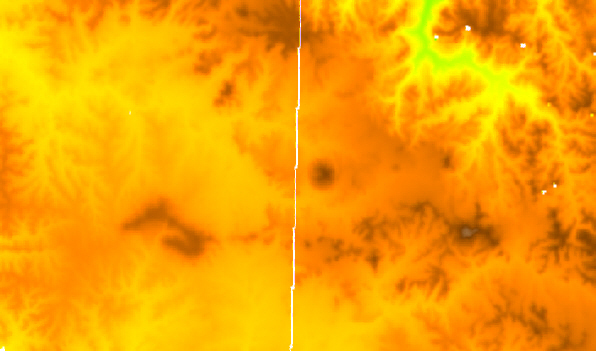


|
| Figure. A comparison of SRTM version 1 and version data around Katoomba in the Blue Mountains of New South Wales. The white areas in the left-hand panel are the data holes, associated with steep clifflines. |

|
| Figure. An example of the terrain not seen by the shuttle mission. Narrow Neck, Katoomba. Photo: McRae |

|
| Figure. An example of the tile mismatch artefact, version 1 data. |